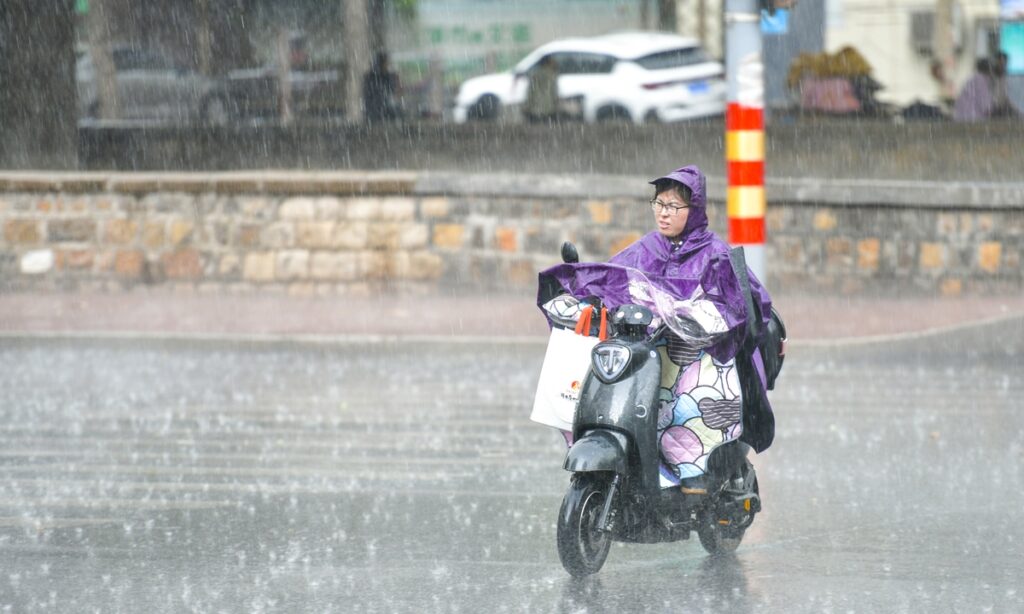Widespread damage ‘not likely to occur’ due to better preparations
During the past few days, several regions in China have been hit by extreme weather. Northwest, Southwest and Central China suffered from prolonged high temperatures, while South and East China regions suffered from heavy rainfall.
With these unexpected meteorological impacts, questions have been raised regarding the country’s reactions to potential risks of electricity shortages or heavy floods. Experts on Sunday said that widespread damage is not likely to occur, based on better preparations, previous lessons learned and the improving emergency response capabilities seen in recent years.
According to a Sunday release from the China Meteorological Administration (CMA), temperature monitoring showed that Northwest China’s Xinjiang Uygur Autonomous Region recorded 40 C to 46 C temperatures on Saturday along the north part of the Tianshan Mountains and in some areas of the Turpan Basin. Parts of Southwest China’s Sichuan, Central China’s Henan, Hubei and Hunan, and East China’s Anhui, Shanghai and Jiangsu all saw high temperatures of 35 C or higher.
In the coming week, more regions in northern China will experience heat, according to the CMA forecast. The early onset of high temperatures means that the peak electricity consumption period may be extended this year.
According to the China Electricity Council, it is anticipated that the highest national electricity load in 2023 will be about 1.37 billion kilowatts, an increase of about 80 million kilowatts over the 2022 figure. However, if there is a long period of widespread extreme weather, the highest national electricity load in 2023 may increase by about 100 million kilowatts over that of 2022.
On June 1, the State Council, China’s cabinet, held a meeting on the peak summer energy and electricity supply, calling for power generation enterprises to generate as much electricity as possible, while ensure safety, and make every effort to ensure a safe and reliable supply of energy and electricity during the summer peak.
In response to the pressure on electricity supply, China will be far more prepared this year than last year, Lin Boqiang, director of the China Center for Energy Economics Research at Xiamen University, told the Global Times on Sunday.
“After the lessons learned last year, the government has more complete solutions in all aspects, including coal power security and coal supply,” he said. “A long-term or widespread power shortage situation is not likely to occur.”
China’s electricity load curve is characterized by periods and seasons, and meeting peaks in summer or winter has become a regular challenge, Yuan Jiahai, a professor at the School of Economics and Management at North China Electric Power University, told the media on Sunday.
With the recent fall in coal prices, the cost pressure on power companies to maintain supply is significantly reduced compared with last year, which is good news, Yuan said.
The heat is not the only extreme weather hazard that is plaguing regions of China this summer. There is also the risk of flooding from heavy rainfall.
Many areas in South and East China have already experienced extended periods of heavy rainfall in the past few days. On Sunday, the rain remained strong in many areas, including heavy to torrential rain in some parts of South China’s Guangxi, Guangdong and Hainan.
From June 7 to 10, the urban area of Beihai, a city in Guangxi and the surrounding counties had rare sustained heavy precipitation. The city’s cumulative rainfall surpassed 500 mm, which is the largest amount of rainfall in recorded history.
Jiangsu in East China is also experiencing prolonged heavy rainfall. According to the Jiangsu Provincial Meteorological Station, thunderstorms and high winds and local hailstorms occurred from north to south along and north of the Yangtze River in Jiangsu Province starting from Saturday morning.
On Sunday, the CMA continued to issue heavy rainfall warnings. It is expected that in the next three days, there will be showers or thundershowers in many parts of North China, Northeast China, East China and South China, with strong convective weather such as short-duration heavy precipitation, thunderstorms, wind or hail in local areas.
In a meeting on Saturday, China’s emergency department studied and assessed the trend of the current flood situation, and flood control and rescue work in key areas. According to forecasts, large floods are likely to occur in the Pearl River, Minjiang River and other basins.
More extreme weather is anticipated to be the future climate trend, Lin told Global Times. However, the Chinese government has largely stepped up its response to emergencies and disasters in recent years, so the likelihood of a nationwide natural disaster is very low.
(Global Times)




